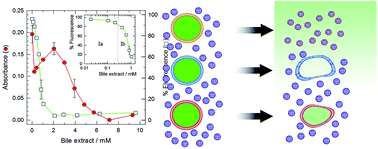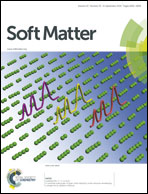Characteristics and behaviour of liposomes when incubated with natural bile salt extract: implications for their use as oral drug delivery systems
Abstract
The use of liposomes for oral administration of drugs and for food applications is based on their ability to preserve entrapped substances and to increase their bioavailability. Bile salts are one of the agents that affect the liposome structure during intestinal digestion and the main reported studies on liposome/bile salt systems used only one bile salt. The aim of this work is to characterise the interaction of liposomes with a natural bile salt extract (BSE) at physiological pH and temperature. Three types of liposomes (fluid, gel-state and liquid-ordered bilayers) were studied. Phase diagrams were obtained and a very different behaviour was found. Fluid bilayers were completely permeable to an entrapped dye with partial or complete disruption of vesicles (final size 10 nm). Gel-state bilayers released their content but BSE led to the formation of large mixed structures (2000 nm). Liquid-ordered bilayers formed mixed vesicles (1000 nm) and, surprisingly, retained a high percentage of their aqueous content (about 50%). As a consequence, each type of liposome offers singular features to be used in oral applications due to their specific interaction with bile salts.


 Please wait while we load your content...
Please wait while we load your content...